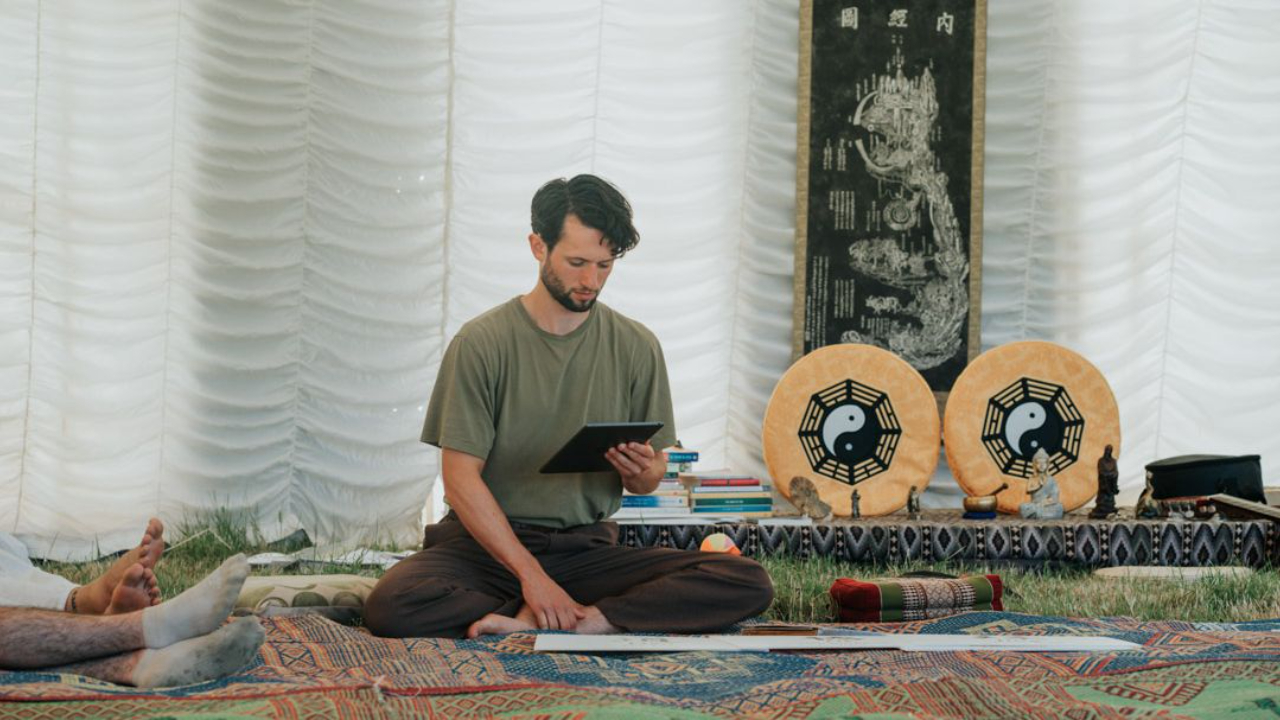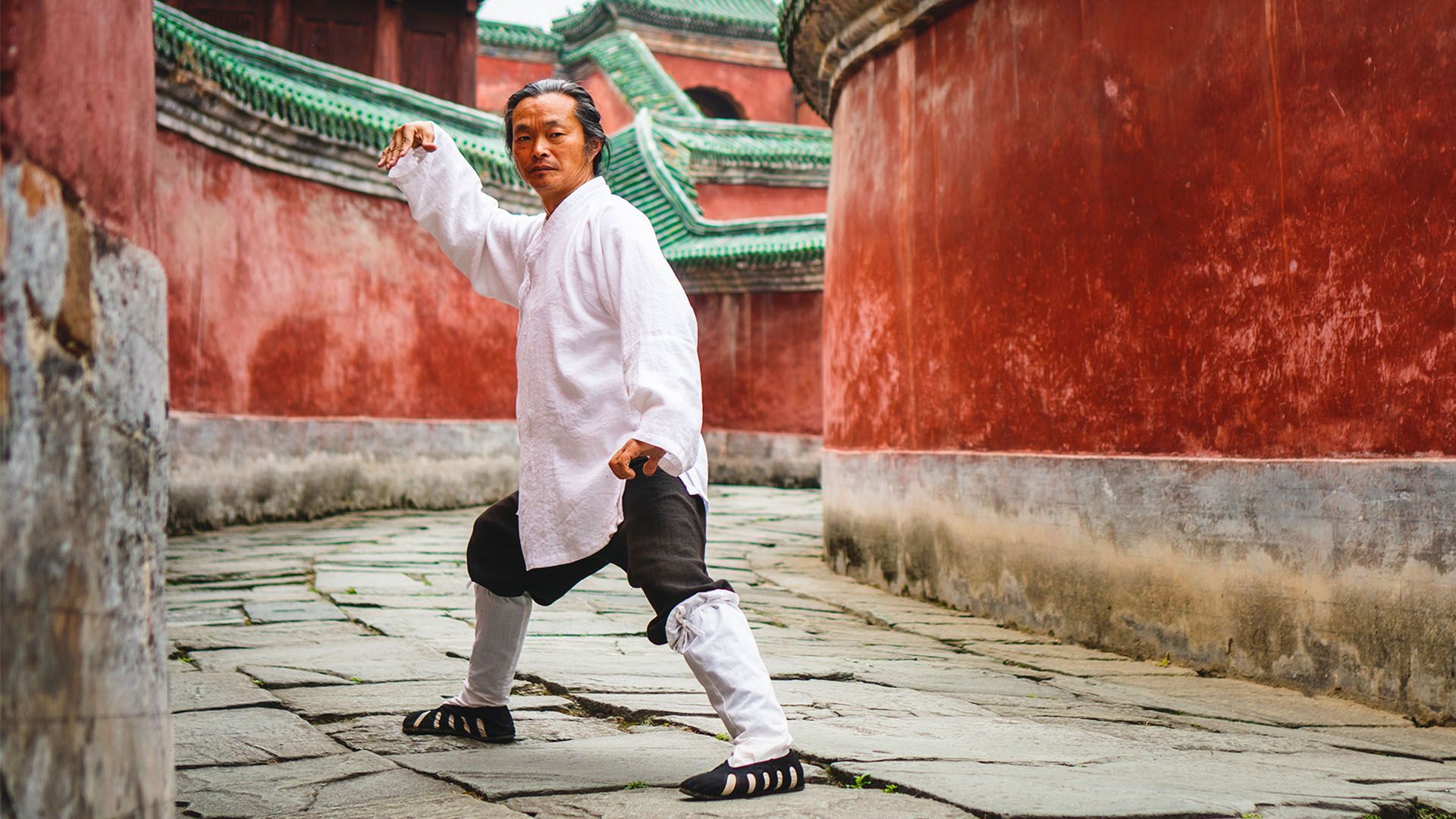6 Best Qigong Poses: A Complete Guide For Beginners
Jan 11, 2024
In today's fast-paced world, stress and a lack of vitality are common issues, often leading to physical and mental health challenges. Research shows that integrating mind-body practices like Qigong into daily life can significantly improve well-being, and it is very crucial to know the best Qigong poses. Qigong, a cornerstone of Traditional Chinese Medicine (TCM), combines meditative and physical movements to enhance the body’s energy flow.
This guide presents the “6 Best Qigong Poses You Must Know,” specially designed for anyone, regardless of age or fitness level. These poses, rooted in medical Qigong and Qigong meditation, offer a simple yet effective way to cultivate Qi, promote healing energy, and improve overall health.
Embrace the transformative power of Qigong and experience the benefits of improved vitality, calmness, and injury recovery.
Table of Contents
- History of Qigong
- Preparing for Qigong Practice
- Qigong Pose 1: The Balancing Dragon
- Qigong Pose 2: Crane Opening Wings
- Qigong Pose 3: Tiger Stance
- Qigong Pose 4: Flowing Water and Floating Clouds
- Qigong Pose 5: Gathering Heaven's Chi
- Qigong Pose 6: The Standing Tree Meditation
- Benefits of Qigong
- Incorporating Qigong Poses into Daily Life
- Conclusion
- FAQs
History of Qigong
Qigong, an ancient Chinese practice, has a rich history spanning thousands of years. Rooted in Traditional Chinese Medicine (TCM), martial arts, and philosophy, its origins are often traced back to Taoism and Buddhism. The term 'Qigong' was coined in the 20th century, but the practices it encompasses date back to ancient times. Historically, Qigong was developed to cultivate Qi (life energy), enhance health, and prolong life. It was often closely guarded within families or between masters and disciples, making its history somewhat elusive. Over centuries, Qigong evolved, integrating physical postures, breathing techniques, and mental focus. Its popularity surged in the mid-20th century when the Chinese government began promoting it for its health benefits. Today, it's recognized worldwide as a valuable component of holistic health and wellness.
Preparing for Qigong Practice
Preparing for Qigong practice involves both mental and physical preparation, particularly focusing on breathing and posture. This preparation is crucial for beginners as it sets the foundation for effective practice.
Integrating Breathing and Posture for Optimal Energy Flow (Meridian)
Proper breathing and posture are key to enhancing the flow of Qi (energy) along the body's meridians (energy pathways).
-
Breathing: Qigong emphasizes deep, diaphragmatic breathing.
- Breathe slowly and deeply, allowing the abdomen to expand and contract.
- Sync the breathing with movements to maximize energy flow.
- Inhale deeply to draw in positive energy, and exhale to release negative energy.
-
Posture: A correct posture aligns the body for optimal energy circulation.
- Stand with feet shoulder-width apart, knees slightly bent.
- Keep the spine straight and elongate the neck as if suspended from above.
- Relax the shoulders and let the arms hang naturally.
Mental and Physical Preparation Tips for Beginners
Mental Preparation Tips:
- Cultivate an Open Mind: Approach Qigong with curiosity and an open mind, free from expectations or judgments.
- Set Intentions: Before starting, set clear intentions for your practice, such as seeking relaxation, healing, or energy cultivation.
- Focus on Breathing: Pay attention to your breath. Deep, slow breathing helps calm the mind and center your thoughts.
- Embrace Stillness: Spend a few moments in stillness, letting go of daily stresses and distractions, to create mental space for practice.
- Practice Mindfulness: Be present in the moment, observing your thoughts and emotions without attachment as you prepare to engage with Qigong.
Physical Preparation Tips:
- Comfortable Clothing: Wear loose, comfortable clothing that allows for unrestricted movement.
- Hydration: Ensure you are well-hydrated, but avoid heavy meals just before practicing.
- Warm-Up: Engage in gentle stretching or a light warm-up to prepare your body and prevent injuries.
- Find a Suitable Space: Choose a quiet, clean, and comfortable space where you can practice without interruptions.
- Posture Awareness: Be mindful of your posture. Stand with feet shoulder-width apart, knees slightly bent, and spine straight yet relaxed.
Qigong Pose 1: The Balancing Dragon
A Moving Meditation Technique:
The Balancing Dragon pose in Qigong is a meditative exercise that promotes the flow of energy, or Qi, throughout the body. This pose involves standing with feet shoulder-width apart and knees slightly bent, symbolizing a grounded and stable stance. The hands and arms move in a flowing manner, akin to a dragon's movement, enhancing blood circulation and energy channels.
Benefits: Cultivating Qi and Enhancing Injury Recovery
- Cultivates Qi: By focusing the mind and synchronizing breath with movement, this pose enhances the body’s Qi.
- Aids Injury Recovery: The gentle, rhythmic movements help in rehabilitating injuries, especially around the joints, by promoting synovial fluid production.
- Improves Flexibility and Balance: Regular practice of this pose can enhance physical flexibility and balance, making it suitable for anyone of any age.
Qigong Pose 2: Crane Opening Wings
How to Perform this Tai Chi-Inspired Pose:
Crane Opening Wings is a Tai Chi-inspired Qigong pose that mimics the gracefulness of a crane. It involves standing with feet slightly apart, lifting the arms gently with palms facing downwards, and then gracefully moving them as if mimicking a bird's wings. This pose requires concentration and balance, engaging the mind and body in unison.
Health and Wellness Benefits: A Medical Qigong Perspective
- Enhances Coordination and Focus: This pose improves mental focus and physical coordination.
- Promotes Respiratory Health: The expansive movements of the arms aid in deep breathing, benefiting lung health.
- Reduces Stress: The graceful movements coupled with focused breathing help reduce stress and anxiety.
Qigong Pose 3: Tiger Stance
A Qigong Exercise for Energy:
The Tiger Stance is a dynamic Qigong pose that involves standing with feet wider than shoulder-width, knees bent, and hands positioned as if ready to pounce. This stance is designed to awaken the body’s energy and strengthen the lower body.
Physical and Energetic Advantages: Boosting Qi and Meridian Health
- Strengthens Lower Body: Helps in building strength in the legs and lower back.
- Boosts Qi Flow: The pose stimulates the meridian pathways, enhancing the flow of Qi.
- Increases Mental Alertness: The stance requires focus, thereby sharpening mental alertness.
Qigong Pose 4: Flowing Water and Floating Clouds
Technique and Execution for Energy Cultivation:
Flowing Water and Floating Clouds involve fluid, continuous movements that mimic the natural flow of water and the drifting of clouds. This pose requires the practitioner to move with ease and grace, ensuring smooth transitions between movements.
Enhancing Mental Clarity and Physical Agility
- Promotes Relaxation: The flowing movements create a sense of calmness and relaxation.
- Improves Agility: Regular practice enhances physical agility and gracefulness.
- Fosters Mind-Body Connection: This pose deepens the connection between mind and body, promoting overall harmony.
Qigong Pose 5: Gathering Heaven's Chi
A Complete Guide to Qi Cultivation:
Gathering Heaven's Chi is a powerful pose for cultivating energy. It involves standing with feet parallel and arms raised above the head as if gathering energy from the heavens. This pose is a blend of physical movements and meditative focus, aimed at harnessing Qi from the environment.
Impact on Energy Healing and Overall Well-being
- Enhances Energy Levels: Regular practice boosts vitality and energy levels.
- Promotes Healing: This pose is believed to have healing properties, benefiting both physical and mental health.
- Encourages Spiritual Connection: It fosters a sense of connection with the universe, deepening spiritual awareness.
Qigong Pose 6: The Standing Tree Meditation
A Practice of Qigong Meditation:
The Standing Tree Meditation is a quintessential Qigong practice, embodying stillness and stability. The practitioner stands still, feet planted firmly on the ground, with arms raised at shoulder level, emulating a tree's sturdy, rooted stance. This meditative pose focuses on internal energy and mindfulness.
Integrating Mind, Body, and Spirit for Holistic Health Benefits
- Cultivates Inner Peace: This standing meditation promotes calmness and mental clarity.
- Strengthens Physical Posture: It improves posture and physical alignment.
- Fosters Holistic Well-being: The pose integrates physical, mental, and spiritual elements for overall well-being.
Benefits of Qigong
-
Improves Physical Health: Qigong exercises stimulate blood flow and aid in maintaining a healthy metabolism, which is essential for overall physical health. Regular practice can help alleviate the symptoms of chronic illnesses like arthritis and aid in injury recovery.
-
Enhances Mental Well-being: By focusing on slow, deliberate movements and breath control, Qigong helps reduce stress and anxiety, promoting mental clarity and emotional balance.
-
Boosts Energy Levels: The practice of Qigong is centered around cultivating and balancing Qi, which can lead to increased vitality and energy.
-
Promotes Longevity and Immune Function: Qigong is known for its ability to improve immune function and overall longevity. Its gentle movements and breathing exercises help strengthen the body's natural defenses.
-
Increases Flexibility and Balance: Regular Qigong practice enhances flexibility and balance, which are important for preventing falls and improving overall physical agility, especially in older adults.
These benefits make Qigong a comprehensive practice for improving health and well-being, suitable for individuals of all ages and fitness levels. So why don’t you join us? "Sign up here!”
Incorporating Qigong Poses into Daily Life
Qigong for Beginners: Getting Started with Regular Practice
Starting a Qigong practice as a beginner can be a transformative journey towards better health and well-being. It's advisable to begin with basic qigong poses and movements, focusing on the flow of Qi and correct breathing techniques. Beginners should aim for short, regular sessions; even 10 to 15 minutes a day can yield significant benefits. It's important to practice in a calm, comfortable environment where you can relax and focus. Gradually, as you become more familiar with the movements, you can extend your practice time and experiment with more complex qigong poses. Remember, consistency is key in Qigong; regular practice helps cultivate energy and improve physical and mental health.
Sustaining a Qigong Program for Long-Term Health Benefits
Maintaining a regular Qigong practice is crucial for long-term health benefits. To sustain your Qigong program, set a specific time each day for practice, creating a routine that integrates seamlessly with your daily life. This consistency helps establish a rhythm and makes it easier to stick to your practice. Additionally, keep track of your progress and how your body and mind feel after each session. This awareness can be highly motivating. It's also beneficial to explore different styles and forms of Qigong to keep your practice interesting and challenging. Remember, the goal of Qigong is not just physical fitness but also achieving a harmonious balance between mind and body, which contributes to overall well-being.
Conclusion
Embarking on the journey of Qigong practice can be a transformative experience, offering profound health benefits and a sense of inner peace. These six qigong poses are a gateway to understanding how Qigong harmonizes the mind, body, and spirit. As you integrate these techniques into your exercise routine, observe the positive changes in your energy levels, mental clarity, and physical health. Qigong is more than just an exercise; it's a lifestyle that fosters vitality and wellness. Have you felt a difference in your well-being since practicing Qigong?
FAQs
1. Is Qigong easy to learn and practice for everyone?
Yes, Qigong is well known for being accessible to people of all ages and physical abilities. It includes simple, low-impact movements and poses that are easy to learn.
2. How does practicing Qigong poses benefit physical health?
Qigong exercises are beneficial for physical fitness and health. They help strengthen muscles and improve balance, flexibility, and cardiovascular health. Regular practice can aid in injury recovery, especially joint pain, by promoting active stretching and increasing blood flow. It also positively impacts digestion and can reduce the risk of chronic diseases.
3. What are the mental and spiritual benefits of Qigong?
Beyond physical health, Qigong is also known for its mental and spiritual benefits. It can reduce stress, increase focus, and calm the mind by enhancing Qi circulation.
4. What is the difference between Qigong, Tai Chi, and Yoga?
While Qigong, Tai Chi, and Yoga all focus on breath, posture, and movement, they have distinct characteristics. Tai Chi is a form of Qigong with more choreographed movements and martial arts roots. Yoga, on the other hand, often involves more intense stretches compared to the gentle stretching in Qigong. Qigong emphasizes energy cultivation and is accessible to a wider range of people.
5. How long and how often should one practice Qigong?
The duration and frequency of Qigong practice can vary based on personal goals and the style of Qigong. Beginners might start with sessions of around 20 minutes, twice a week.







